[ page 1 ]
1/72 scale kits of the MiG-17 (NATO "Fresco")

The MiG-17 was developed by the Mikoyan-Gurevich design bureau using experience with their MiG-15 fighter. The designated "SI" would get an improved "compound" swept wing with various sections and lower transonic drag. It would also get a larger fuselage. The first prototypes were ready beginning 1950 and the "SI-2" first flew February 1950. But it crashed March 1950 as its pilot was unable to recover from a dive that proved to be caused by wing aeroelastic divergency at the ailerons. A major redesign followed that took over a year and the new wing was thinner than of the MiG-15 and got 3 wing fences.
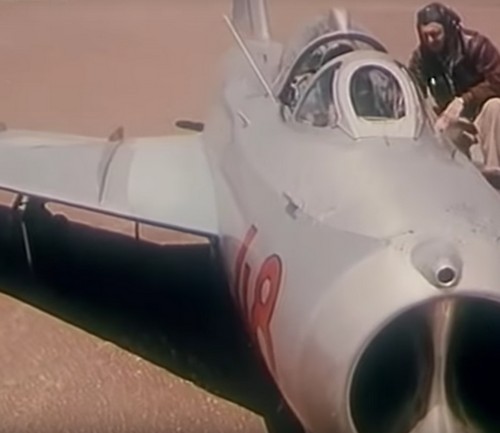 <screen shots old Soviet film>
<screen shots old Soviet film>The first production MiG-17A with a KV-1 jet engine was delivered October 1952 and had a N-37 37mm canon at starboard and a pair of NR-23 23mm canons at port. It used some components as the MiG-15bis like a similar "KK-1" ejection seat in the MiG-17 "sans suffix". It had rectangular small air brakes at the tail cone and it got NATO Code name "Fresco A".
In 1950 work started on Izumrud radar equipped MiG-17 versions in the nose upper intake lip in the MiG-17P and fitted armament with 3 NR-23 canons.
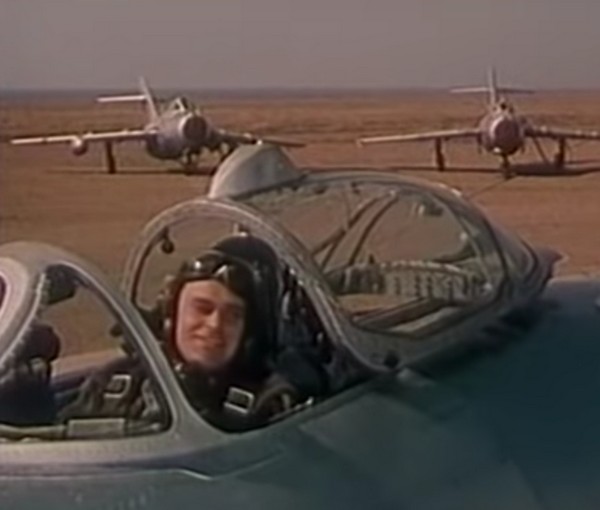
Meanwhile, an afterburner VK-1F engine was tested and this became the standard and fitted in the MiG-17F. It was demonstrated during the 1953 Tushino fly-by show near Moskou. The afterburner vastly improved performance and the -F also got larger air brakes in a redesigned tail end. The MiG-17F was designated by NATO as "Fresco C" and it also had from 1954 onwards an improved AD-3 "KK-2" ejection seat. This KK-2 seat was also used in the MiG-17 P/PF/PFU. Later on a range finder in a small oval panel on top of the nose and better gun sight was fitted.
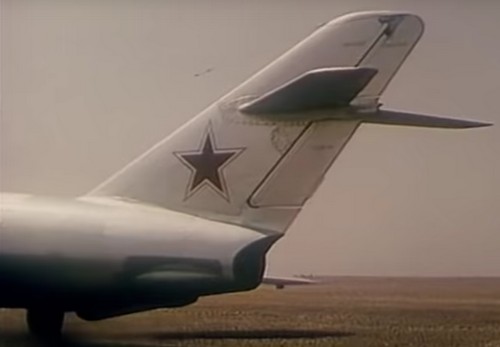
Wing fuel tanks could be either 300 or 400 liters. Most aircraft had a canopy with a rear view mirror fairing on top.
The MiG-17P around 1952 was fitted with a new version VK-1F engine again with afterburner and designated MiG-17PF. The MiG-17PF nose section is a bit longer to accommodate the radar equipment (about 18 cm). A new type windscreen was used, it is also a bit longer and has extra horizontal frames.
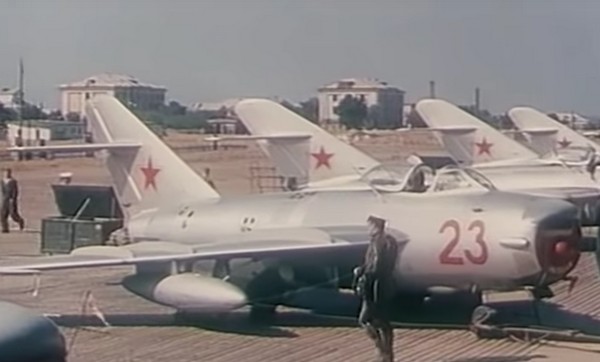
(above a PF / PFM with the longer nose section and different windscreen)
The PFU/ PM "Fresco E" was an all AA-1 "Alkali" missile armed interceptor version and it seems the PFU could fire RS-1/ RS-2 (K-5) missiles.
The MiG-17 was also license built in Poland as Lim-5 by WSK Mielec and in Communist China by Shenyang as F-4 and as J-5. Shenyang also developed a two seat JJ-5 / FT-5 trainer version. (the USSR did remain to use the MiG-15UTI as trainer).
The MiG-17 flew in many air forces, not only in the USSR and Warsaw Pact but also in Soviet supported countries. The MiG-17 was also used in the role of bomber escort and attack aircraft and in Egypt was fitted with bomb racks and unguided rockets. Probably some 8,000 MiG-17 aircraft were manufactured overall.
First seen in the Korea War, it was also used in wars in the Middle East by Egypt and Syria. Even during the Vietnam War in the 1960s it proved that this canon armed fighter was an opponent to be reckoned with. (it led to the re-introduction of guns in US fighter aircraft such as the F-4E).
See further references.....

The new MiG-17 drew considerable attention in the U.S. during the Cold War:
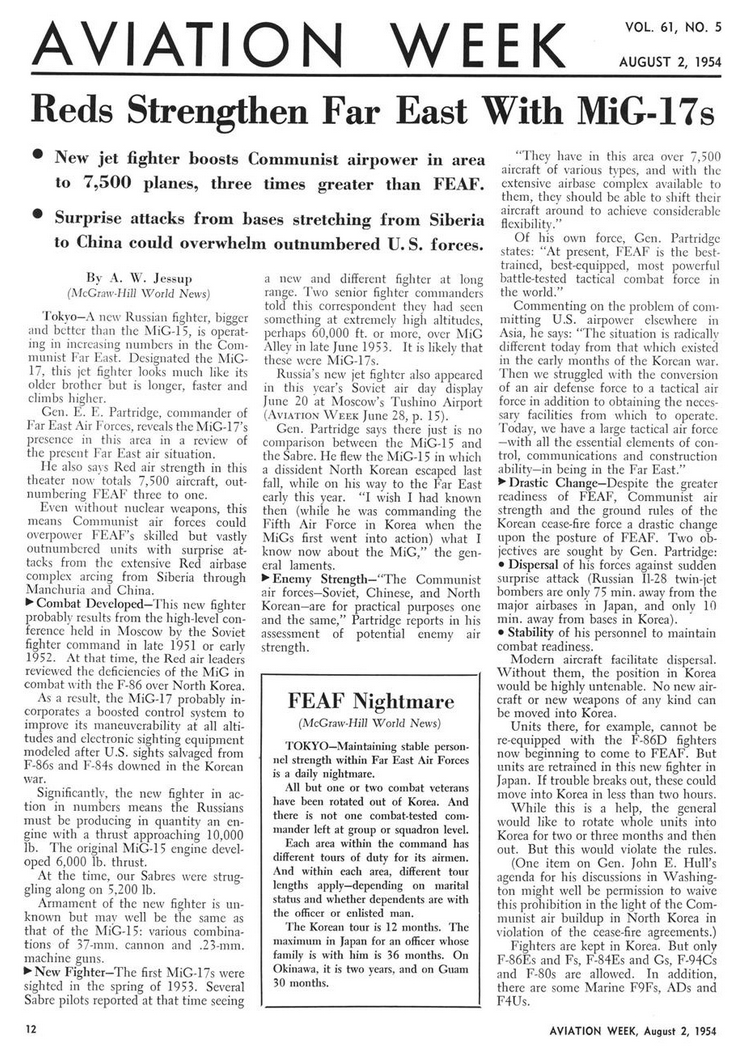
Cockpit interior and instrument panel was mainly mid grey with black details and brown seat cushions usually. Gear bays and legs were "gloss" medium grey as were most wheel discs.
Several 1/72 kits will be made of the MiG-17.

I also have a set of very well researched MiG-17 drawings from probably an Ukrainian aviation magazine. You have to be careful with drawings but these drawings look very good once verified with some dimensions and photos. The details shown also suggest that the drafts men were able to use actual MiG aircraft information. The various drawings were scaled to 1/72 to be used for the various kit shape and size comparisons.
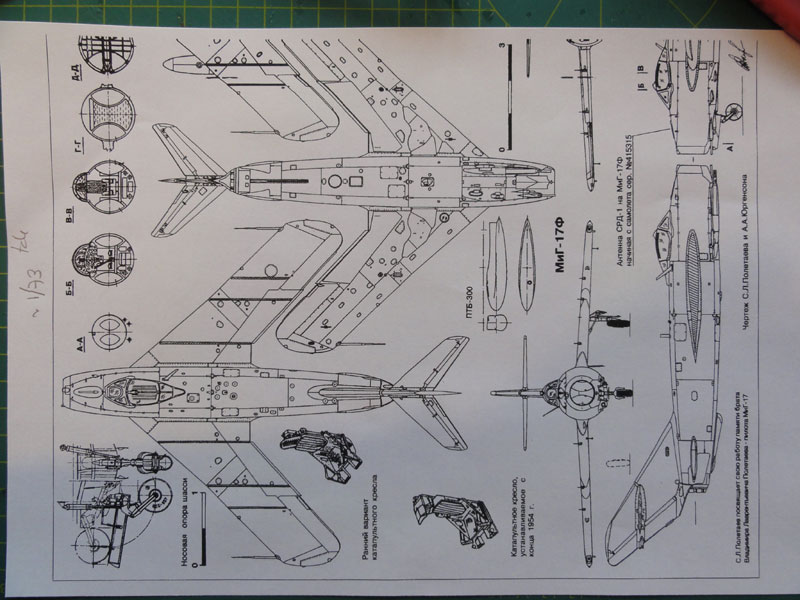
So what are the different MiG-17 kits in 1/72?
page 2
page 3
page 4
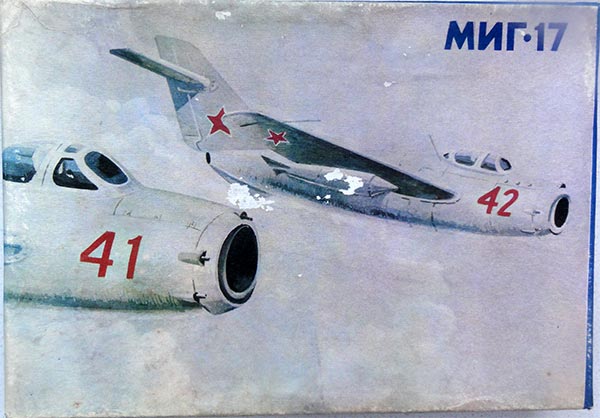
My modelling friend Peter got one and we identified its brand as "NPO A/R-51" MiG-17. It has very basic shapes and the kit will never be made but is now an example on how the hobby evolved in time.
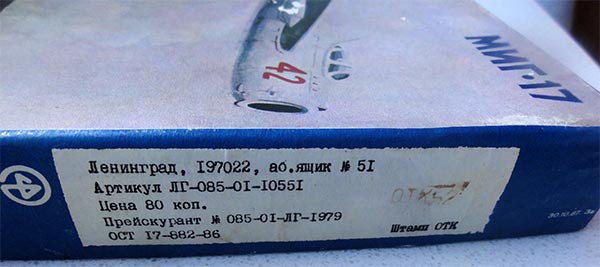
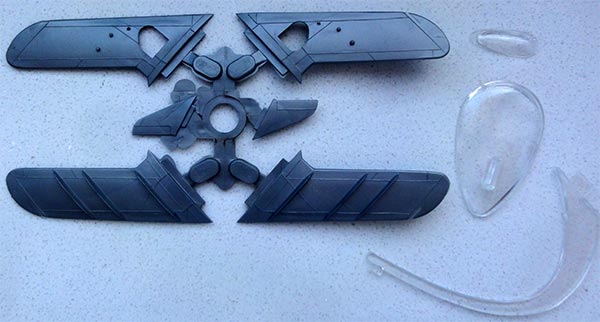
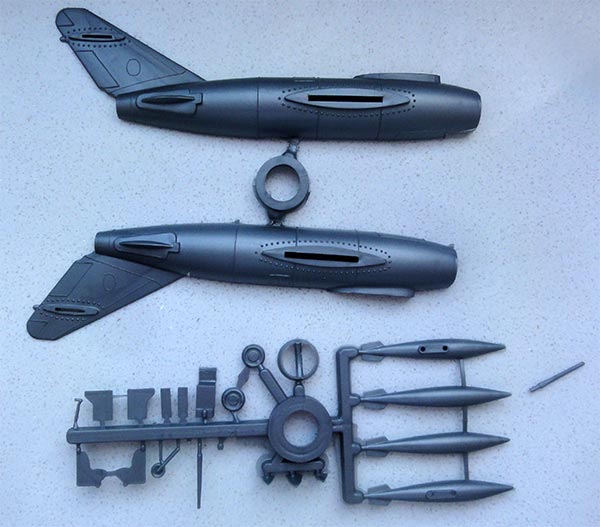
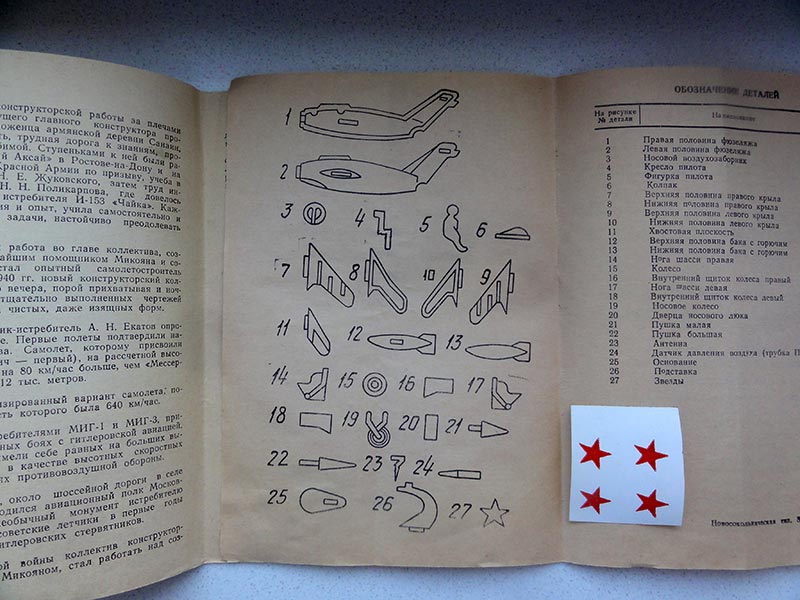
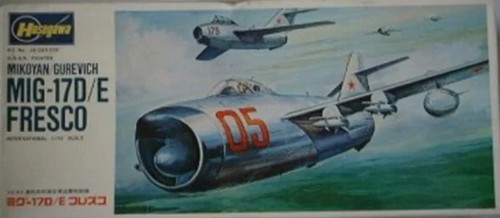
In 1972 Hasegawa came with a kit that was very inaccurate and more 1/65. The wing shape was not that bad, but the fuselage "too fat". It showed in their catalogue to have odd shapes so I never bought it.
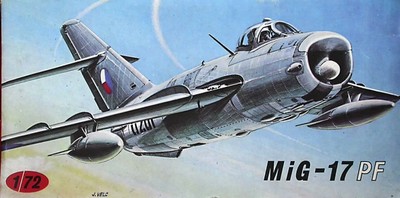
(the KP kit also appeared in boxes from Mastercraft, Kopro, Kitbazar and Smer). I made as a kid this model decades ago but it was "lost somewhere". I remember it had basic shapes but was welcome nevertheless as it seemed reasonably accurate at the time. The windscreen looked correct for a PF with an extra frame and longer nose section as well. Later on I found out it has many errors in shape and size: wing shape chord at leading edge too small, wing tips too big and wing sweep too large. The vertical fin has also a wrong sweep angle.
Fit of this kit was not very good and it had raised panel lines that were in the end all gone as you needed a lot of filler and sanding. The decals were terrible (and improved in later releases as the KP kit was sold for many years).
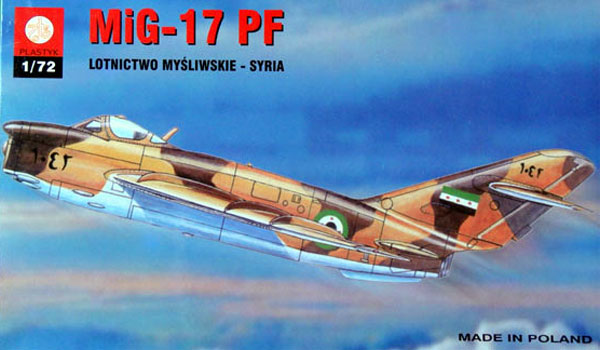
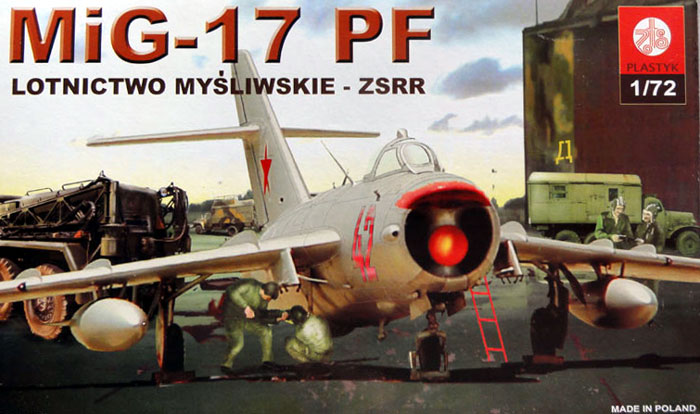
A few 1/72 kits were obtained from ZTS Plastyk from Poland that were released around 2010. It appears that these kits originate from Mistercraft and also were found in boxes from Parc Models, Hobby Park.
The kit has unfortunately a lot of inaccuracies in shape and size, particularly in the tail area. But the nose section seems to be longer as for the PF and it has the different windscreen.
Correcting the tail shapes needs a lot of work. It will be described "how" when these kits are made.
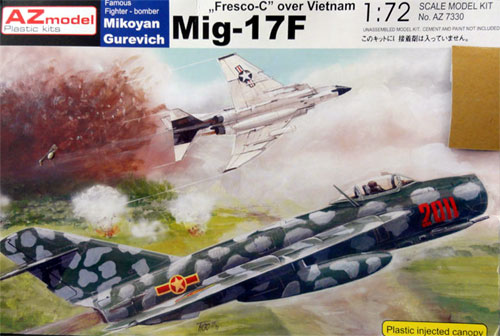
AZ Models came in 1/72 in 2010 with a MiG-17F and in 2011 also PF and a few models will also be made. The shapes and sizes are correct with correct fuselage and standard windscreen. Just a few minor issues that can be corrected. Many air forces used the MiG-17F, so a lot of possible schemes are feasible with aftermarket decals.
The kit has appeared in various boxes, the plastic parts are the same but with different decals.
Kit #AZ7330 for a MiG-17F from 2010 has decals for North Vietnam camouflaged aircraft with 3 Bort numbers of the no.923 regiment around 1966. So during the Vietnam War:

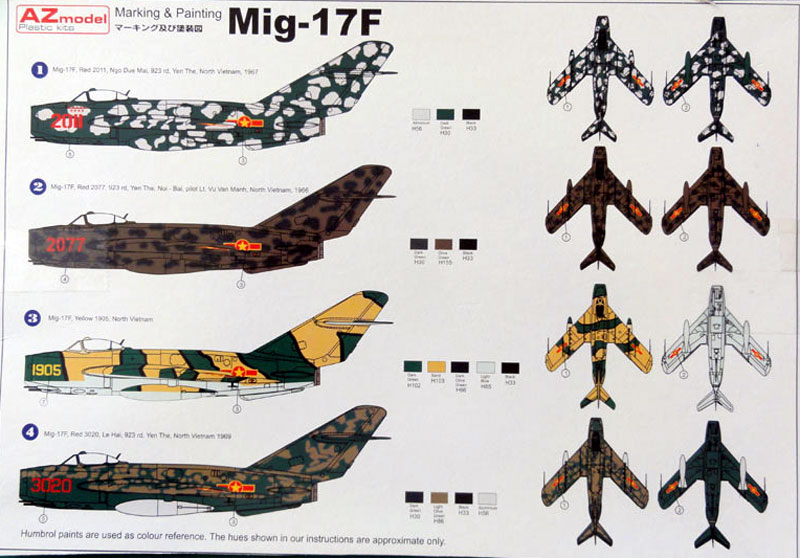
The second one #AZ7328 is also a MiG-17F with decals for Czechoslovakia, DDR, Bulgaria and USSR:
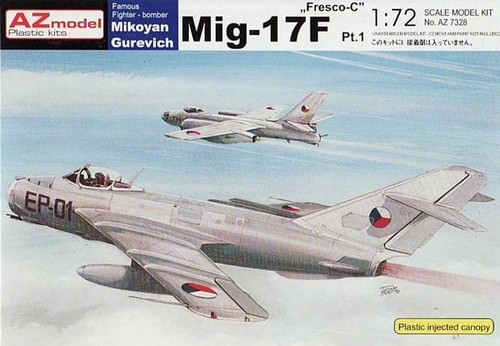
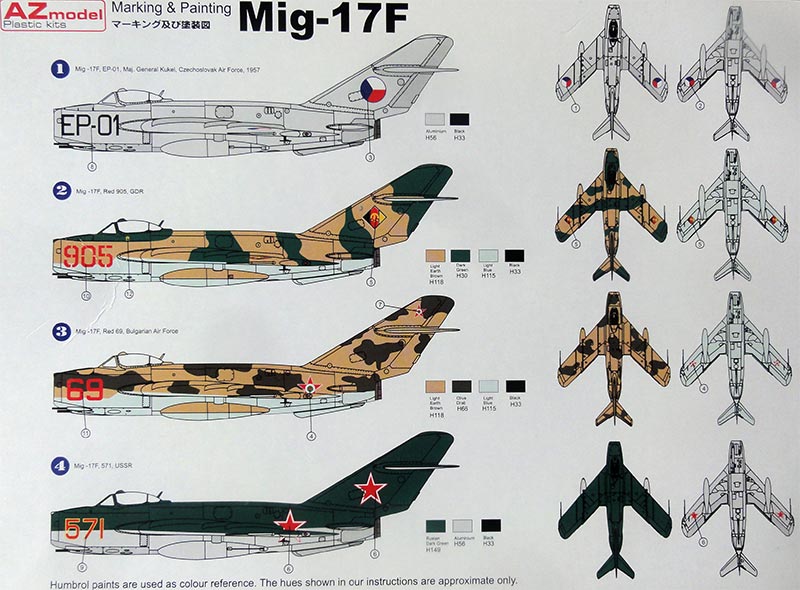
The third one #AZ7332 is also a MiG-17F with decals for Syrian Arab air force, Algeria, Egypt and a captured one in Israeli markings:
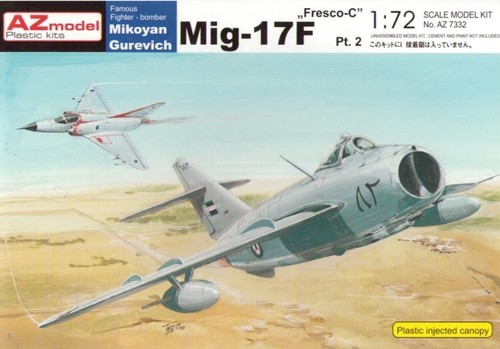
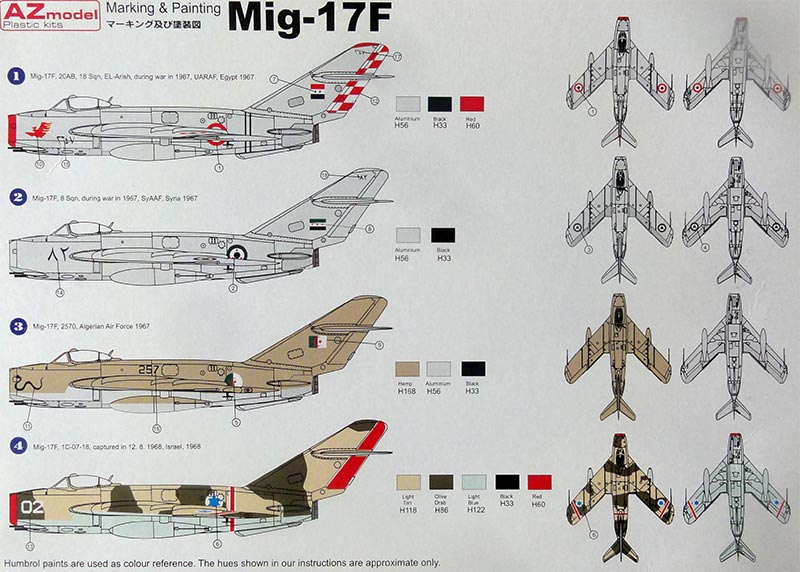
The parts are common in all kits and seen here. Parts have recessed panel lines. (the single piece canopy is not seen here but in the kit).
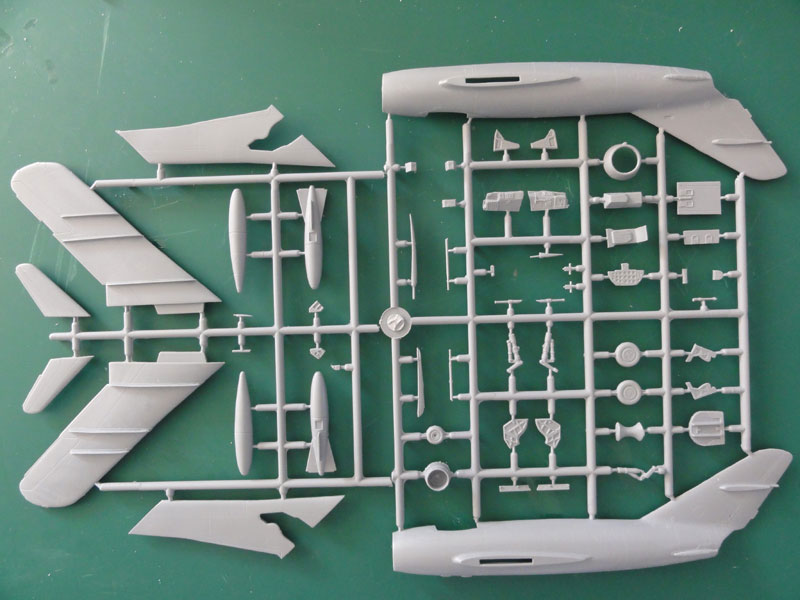
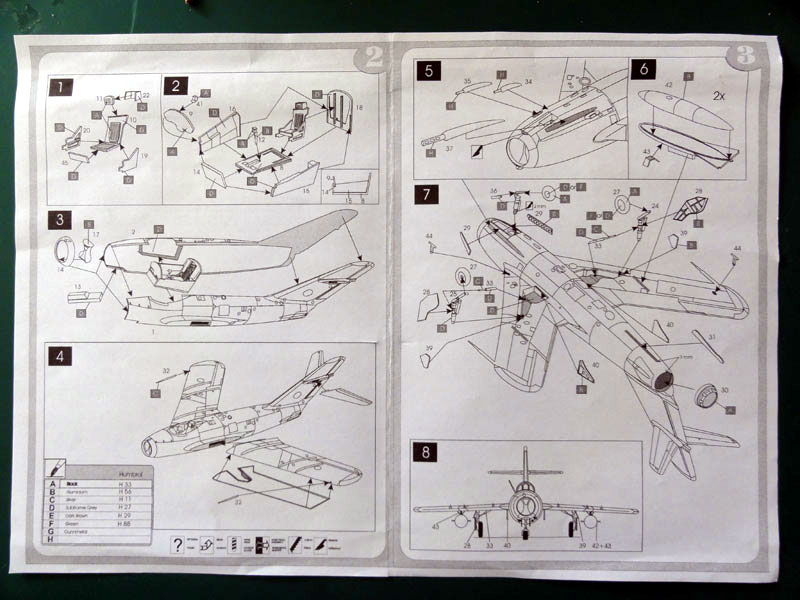
(a) the leading edge kink in the wing is about 1 degree to much sweep, this give a root chord that is about 1 mm too much at the forward leading edge; this can be corrected by sanding off a small portion on the leading edge from the root to where the kink is (about midst wing).
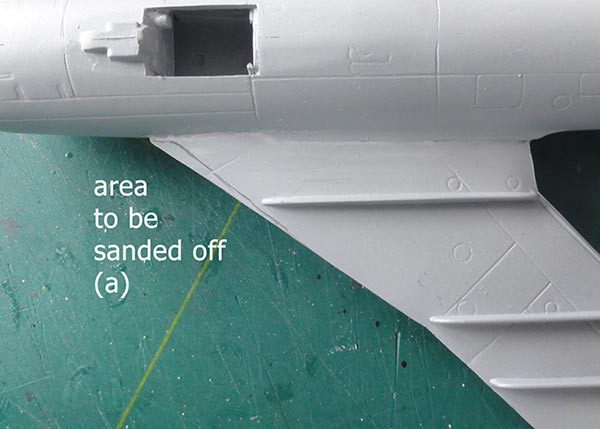
(b) the horizontal stabilizers are a bit too large, this is caused at their overall leading edge sweep that should be 1 degree more. This gives a stabilizer tip chord that is about 1 mm too much. Simple sand off into a sharp edge.
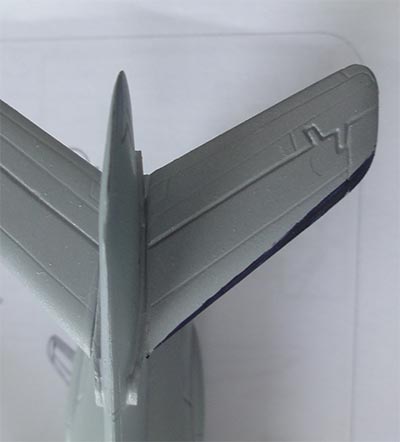
Finally the vertical tail fin is a bit off in some areas (+ / - 0,5 mm) but this is hardly noticeable and this will not be further corrected when building the AZ kits.
Overall, with these (a) + (b) minor corrections, the AZ Model MiG-17F looks good in shape and size.
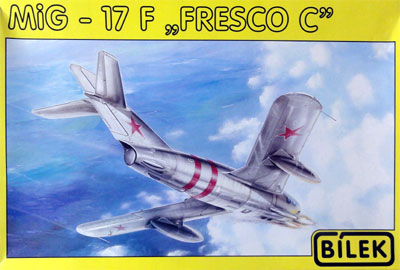
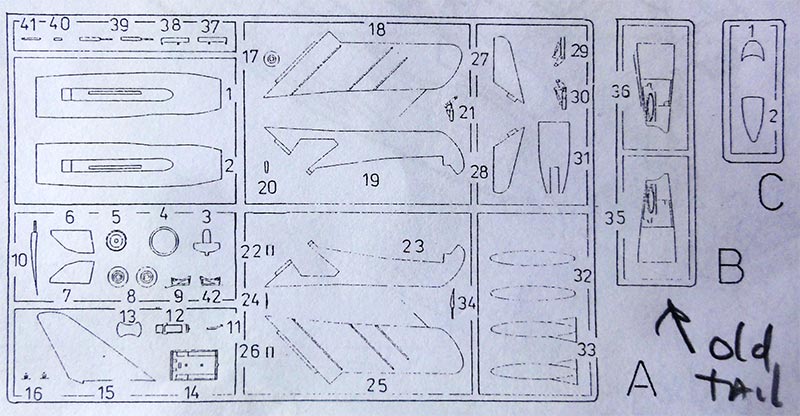
The rear fuselage and tail are separate parts #35 and #36 with the earlier air brakes and for the engine without afterburner! I think that sprue "B" should have been different in the "Fresco F" kit but it was not in the box.
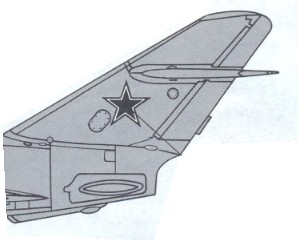
So this kit is NOT for a "Fresco C" but appropriate for a early "Fresco A" as originally in the Dragon / DML release! So the kit can only be made as an early MiG-17 using other after market decals.
The kit as such has about 45 parts in light grey plastic. Panel lines are engraved. Fuel tanks are provided and the gear bays have some details and the nose gear bay is deep. The seat looks to be the later KK-2 type but should for a "Fresco A" be a KK-1, more similar to a MiG-15 seat.
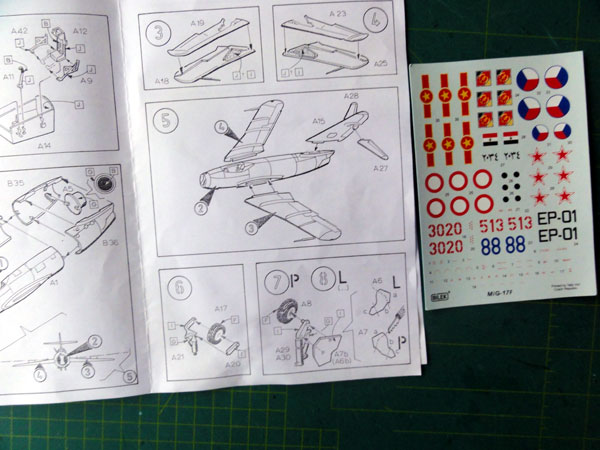
Decals are fine and probably printed by Tally Ho! and for no less than 5 schemes but for MiG-17F "Fresco C":
-1- Czechoslovakia in natural metal (only 2 are claimed to be ever used in the CSSR).
-2- Soviet Union / USSR during the invasion in Czechoslovakia in 1968 in a natural metal scheme.
-3- North Vietnam of the 923 fighter regiment in a mottled camouflage wrap around scheme as used in the Vietnam war in 1972.
-4- Egypt air force is a desert scheme during the Six Day War of 1967.
-5- German Democratic Republic (DDR) in a green camouflage scheme in the 1970s.
You get also stencils decals.
AS NOTED: this kit #965 was released here as MiG-17F "Fresco C" but the parts are for a "Fresco A"!! I suggest thus to use the decals for other correct MiG-17F kits and make this kit as "Fresco A" for which as such it seems correct.
Modelmaster colours are indicated. The cockpit interior is marked to be medium grey as well as the insides of gear bays and gear doors. This is very probable.
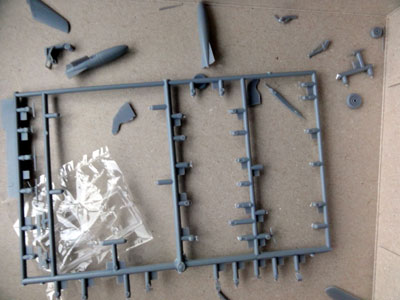
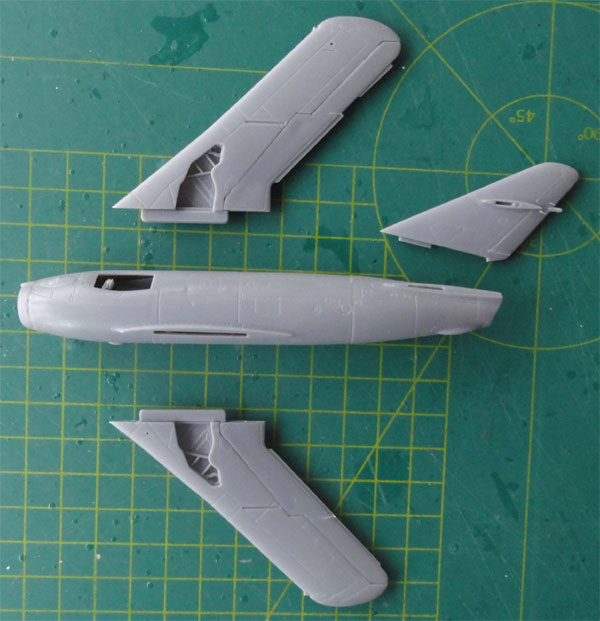
Accuracy:
A check with the Russian drawings show that the wing and its planform looks good and the wing has an airfoil curve and good wing fences.
The horizontal stabilizer and vertical tail look correct.
The nose intake looks fine for a MiG-17 but on top of the nose is an oval fairing for the later range finder which was used on later MiG-17F. So I think it should be sanded off for an early "Fresco A".
The tail with parts in sprue "B" in the box is for an early MiG-17 "Fresco A" with small rectangular air brakes without afterburner. The lower fuselage has the Doppler (?) panels aft of the wing and the cockpit has some detail. These were present on I think all production Fresco's.
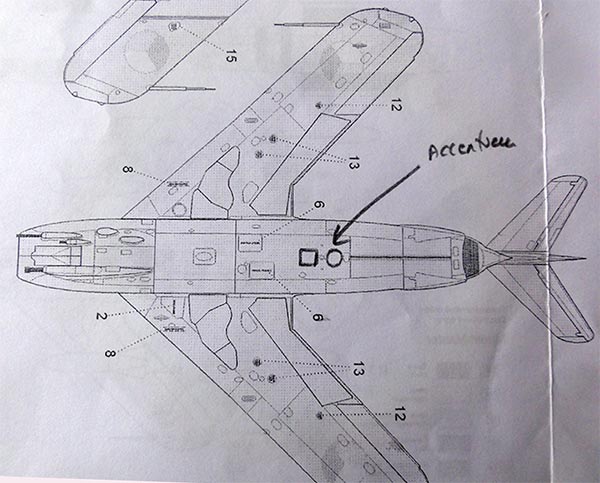
The canopy has engraved ridges which I think are a bit overdone but the canopy shape and size looks good.
Overall, this Bilek MiG-17 is a good kit but for the early "Fresco A" with good shape and size. So do not use these kit decals but get after market decals for a "Fresco A". Assembly takes some sanding and putty. But now there is a better kit.....
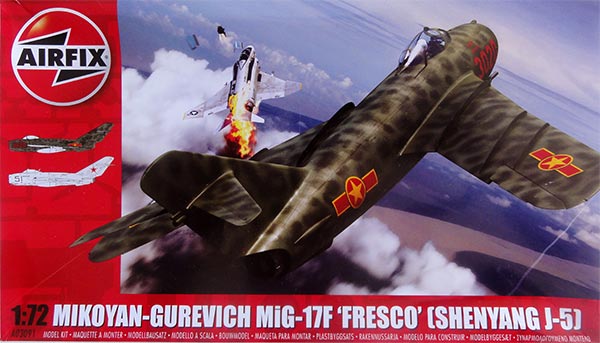
End 2019 Airfix came with their first MiG-17 kit in 1/72. It fits in their series of more recent kits like their MiG-15. Kit #A03091 is for a MiG-17F "Fresco C". It has the later style bigger air brakes and engine with afterburner tail section as appropriate for the MiG-17F. Many air forces used the MiG-17F, so a lot of possible schemes are feasible with aftermarket decals.
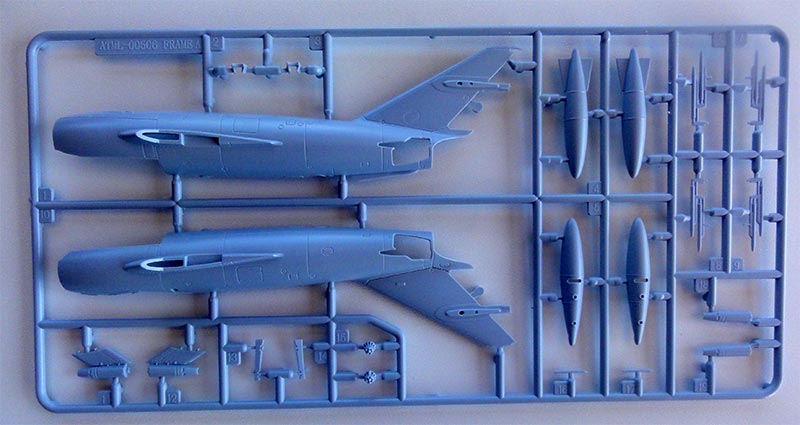
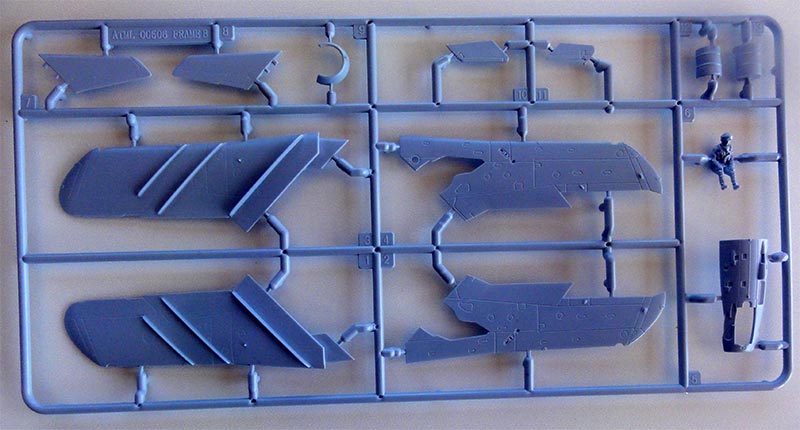
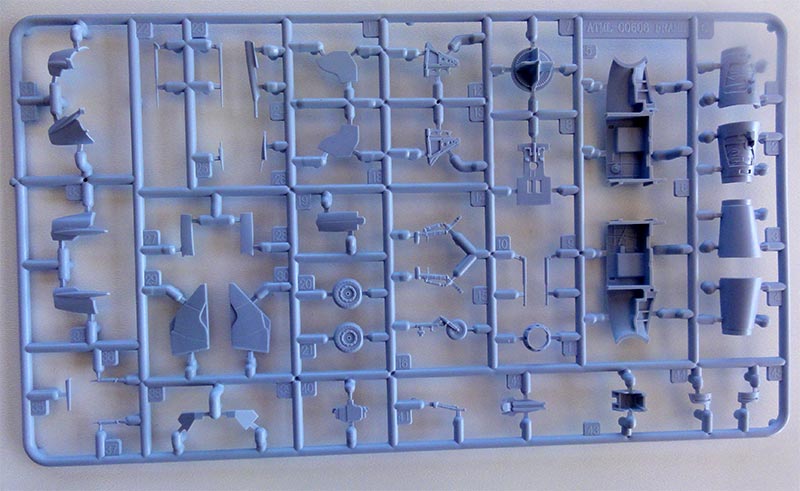
There are some 75 parts in light blue plastic and on the sprues ATML as manufacturer plant is indicated and "made in India".
The panel lines are finely engraved and quite impressive. Though the plastic is soft, they really make this kit stand out. The kit has very nice interior details like a nice air intake funnel and cockpit. You get the choice to set the rear air brakes open or closed. Stores are unguided rockets, rocket pods and fuel tanks.
(The pods and rockets are not used in assembly suggesting they are to be used in another future release).
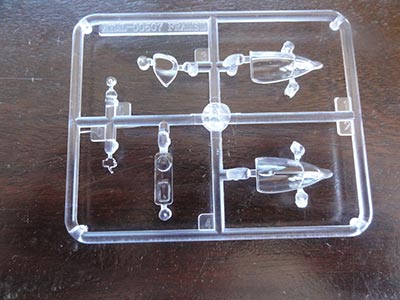
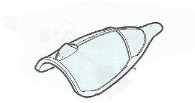
You get 2 canopies: with or without the rear view mirror fairing. The windshield and hood are separate so can be posed open to show the cockpit.
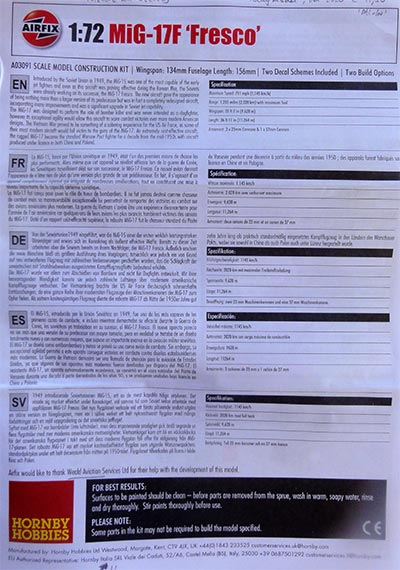
The instructions are good but no part lay-out diagrams are provided. And still the colours are only listed in Humbrol paint numbers so not explained. So "11"= silver, "33"= antracite black, "53" = gun metal, "164" = sea grey, "85" = black, "168"= hemp/ light brown.
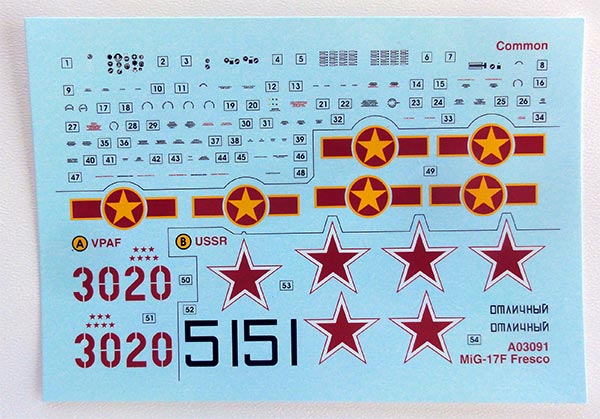
Decals are provided for two schemes:
-1- MiG-17F / Shenyang J-5 of the North Vietnam air force during the Vietnam war in a mottled green camouflage of 932 fighter regiment, Coded "3020" as of 1969.
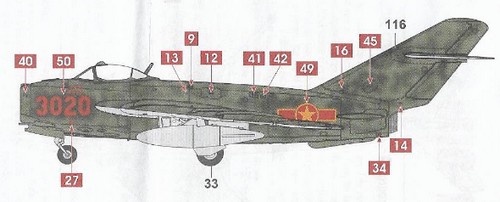
-2- MiG-17F of the USSR / Soviet Union of the VVS institute, Bort no "51" 1970s which is in a usual bare metal scheme. (so not simply "silver" as indicated).
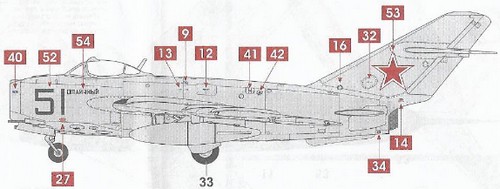
Very nice decal stencillings are provided as well!
Details are seen a lot, it is even indicated to remove the gear down bar in STEPs 12/13 when making a model "in flight". (a stand can be purchased separately).
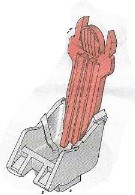
The ejection seat in the kit has some brackets near the head rest I could not identify (* is it for the Shenyang J-5?). For a Soviet manufactured aircraft I suggest to cut off these brackets.
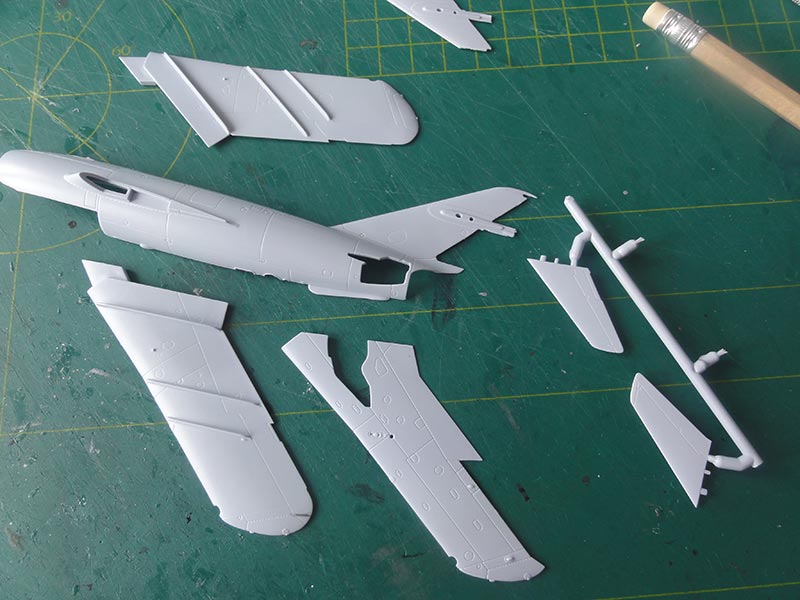
A check of shape and size of the overall kit was made with the very good Russian drawings I had:
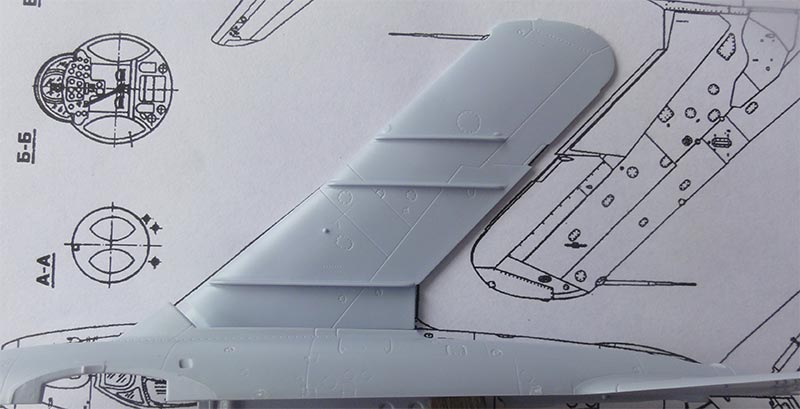
(a) the wing leading edge kink from root to mid wing is a bit too small, about 1 degree. But this is hardly noticeable, the root chord at the leading edge being now about 0,5 mm too small.
-
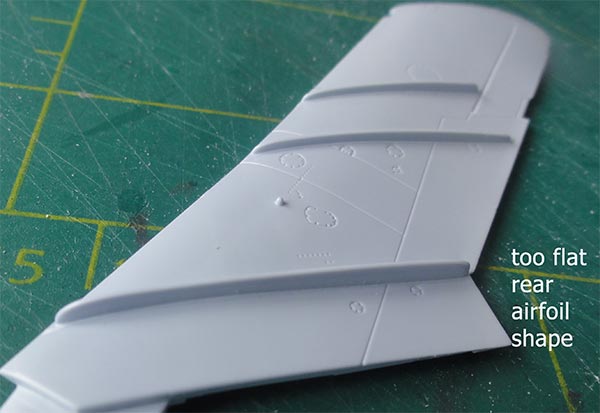
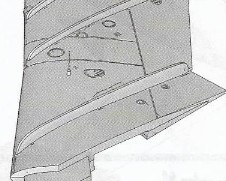
(b) the wing airfoil cross section from mid chord to wing rear trailing edge is flat, not curved; there is not a lot that can be done about it and is hardly noticeable.
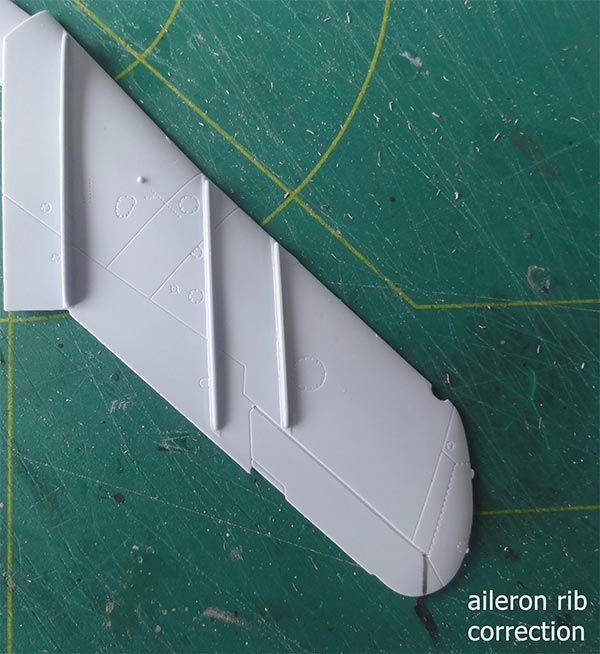
(c) the aileron outboard rib engraving is oriented too much towards the tip, see photo above; it can be easily corrected by filling the line, sand and re-inscribe in the upper wing parts B1 and B2. The aileron gaps themselves are a bit undeep. They can be inscribed a bit deeper to suggest these movable control surfaces.

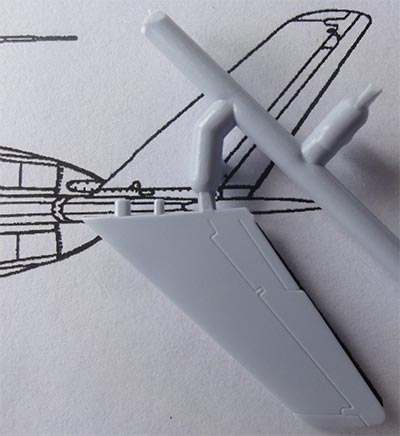
(d) the stabilizers seem OK, but inscribe the elevators a bit deeper.
(e) the overall fuselage shape looks good as well as the vertical tail area. The fuselage tail has the larger style air brakes and the jet with afterburner shape as appropriate for the MiG-17F "Fresco C".
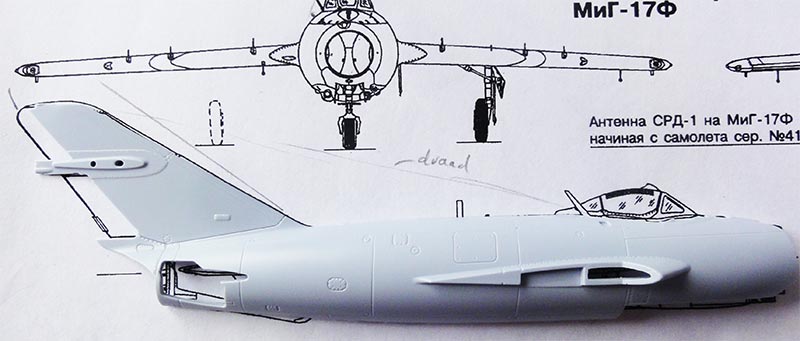
Overall, it can be concluded that this is the best 1/72 kit for the MiG-17F.
Assembly is easy and several of these Airfix kits will also be made and shown on page 4.....
On to next [ Page 2.... ]
References
- Accurate drawings from an Ukrainian Magazine A?B 4-99 ??
- Wings of Fame series, article, Vol. 08 , page 100-115 etc.
- MiG-17 in action, Squadron Signal no.125, 1992
- OKB MiG, Butowski and Miller, Aerofax inc, 1991
- MiG aircraft since 1937, Bill Gunston and Yefim Gordon, Putnam, 1998
- IPMS U.K magazine 1992-3
- Soviet and Russian Military aircraft series: Volumes (1) in Asia, (2) in Africa, (3) in Middle East; by Yefim Gordon and Kommissarov, Hikoki publications
- African Migs, Tom Cooper, Volume 1, Harpia publications, 2010
- African Migs, Tom Cooper, Volume 2, Harpia publications, 2011
- Arab Migs, Tom Cooper, Volume 5, Harpia publishing, 2014
- MiG-17, N. Yakubovich, Warpaint #124 , (published 2020)
Back to 1/72 Models.......
(c) Copyright Meindert "designer"/ All rights reserved. Your comments are welcomed by webmaster
Created this page June 27, 2020;
updated July 14